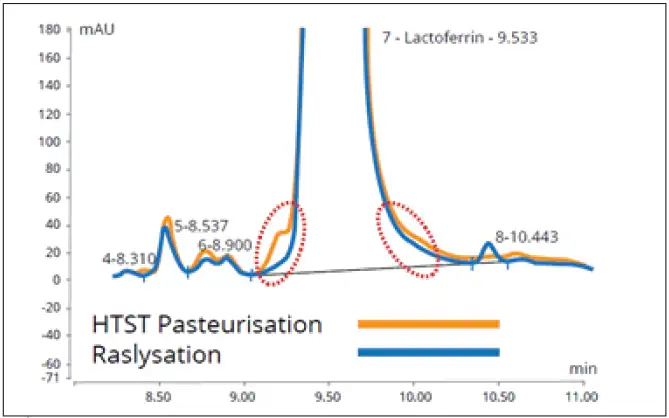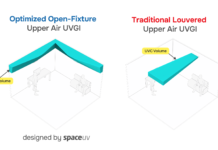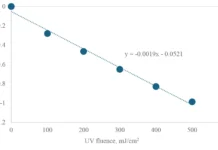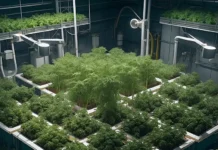Renée G.K. Nielsen, Lyras A/S
In a time when focus is on renouncing certain everyday products given their bad impact on the planet, it seems pertinent for food producers to find ways of maintaining or earning back consumers’ trust by reducing the processing footprint of their products. The fact that consumers not only prefer sustainably sourced products when doing their grocery run but also are willing to pay more for the greener alternative serves as a testimony to the consciousness of today’s consumer.
Pasteurization, a tried and tested method to decontaminate products, is a critical pillar of the food industry. The process has existed for nearly hundreds of years and, over time, manufacturers have continued to streamline the process to improve product quality and reduce waste for increased production capacity. Pasteurization involves killing any harmful microorganisms by heating products to at least 72° C for 15 seconds, ensuring that it is safe to consume while also prolonging its shelf life. The process needs to be efficient enough to reliably kill any harmful microbes without affecting the taste or nutritional value. But, as with all technology and processes, as time goes on, eventually tried and tested processes become outdated and overtaken by up-and-coming technologies. Pasteurization, especially in the current energy and environmental crisis, has become an inefficient technology in comparison to the rise of its newer technology counterparts. Processing lines cannot afford to maintain the high demands of energy needed to rapidly heat and cool products over and over.
A New Way for Liquid Treatment
Ignited by the mission to prove that pasteurization can be done more sustainably, Rasmus Mortensen got the idea of treating liquids with UV-C light instead of heat when he still was at university and then set out to turn his invention into a profession before he could finish his degree. This led him to establish the company Lyras and eventually coin his technology “raslysation,” a combination of the first three letters of his first name and the Danish word “lys,” meaning light (Image 1).
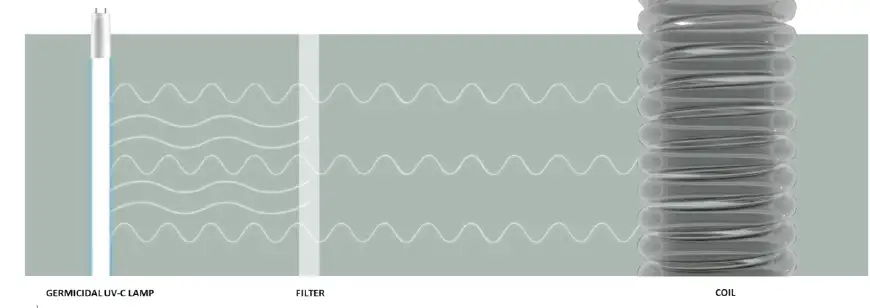
Although sounding rather modern, the natural antibacterial properties of UV-C light have been known for more than 100 years. For this time, UV-C has been widely used to disinfect drinking water. Microbial inactivation in opaque liquids like milk, however, has proven more difficult given the low UV transmittance. If this could be accomplished, it would mean a big difference to the decarbonization of the processing industry, seeing as UV-C treatment is far less resource-intensive than its thermal predecessor. For that reason, Lyras invested heavily in its own test facilities and development of equipment to focus on treatment of opaque liquids, with milk as a relevant and challenging model matrix.
Thanks to a unique combination of lamps, filter and coil procuring the 254-nanometer wavelength, raslysation has succeeded in achieving the same or better results as current microbial treatment for many different applications, including milk. However, there still is some way to go until the technology is ready to replace legal pasteurization of milk, which was what Lyras initially set out to accomplish. The road to having new technologies approved for food treatment is long and requires an extensive amount of research.
But the potential of raslysation has grown far beyond milk. The patented technology is proven and permitted to replace current microbial treatment technologies such as pasteurization and filtration in juice, soda, brewing, wine and industrial fermentation production. Further still, the technology has enormous potential in the treating process and washing water for, as an example, fruit and vegetables, which all must undergo disinfection before entering supermarket shelves.
Minimal Denaturation of Native Proteins
The raslysation technology combines efficient removal of microorganisms – from bacteria to viruses and fungi – with efficient removal of excess heat. This combination safeguards the liquid from protein denaturation and keeps loss of vitamin and sensory values at a minimum.
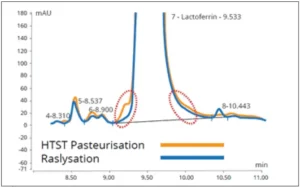
In Chart 1, a comparison of heat damage to proteins after raslysation and pasteurization treatment, respectively, is seen. The microbial safety of lactoferrin traditionally is controlled by thermal treatment. The drawback of heat treatment is the high energy and water consumption and the impact on the product quality. Heat treatment is known to induce changes in the protein structure, such as denaturation, aggregation, oxidation and Maillard reactions. Therefore, a growing interest for nonthermal treatments has arisen in the production of high-quality lactoferrin. It has been proven that the denaturation of lactoferrin can be avoided to an unprecedented degree if pasteurization is replaced by UV-C treatment.
More than just providing microbial control and reducing water, energy and chemical consumption, UV treatment allows the transition from fossil fuels to an all-electric solution, reducing production costs, decarbonizing the processing footprint and improving the value proposition. Taking the financial and environmental aspects into consideration, one could argue that UV-C makes up a superior treatment compared to existing alternatives.
Large- and Small-Scale Productions
In order for UV-C to compete with remaining technologies, like pasteurization, the method must be capable of processing the same capacities. Lyras’ latest addition, the Raslysation Castor, is seemingly the world’s largest for UV-C treatment of opaque liquids and can treat up to 380,000 L/h, which is enough to keep up with even the largest production. The unit has been developed in collaboration with biotech giant Novonesis, a market leader in industrial enzymes, and can be modularized, scaled and adapted to fit the needs of the individual customer.
The World to Gain
If a dairy producing 40 tons of whey per hour switches from traditional pasteurization to raslysation, it will emit approximately 850 metric tons less of CO2 per year (based on the EU average). This corresponds to the energy consumption of driving around the world 164 times in a regular car.
A number of financial and environmental aspects thus make UV-C light a logical and advantageous replacement for traditional heat treatments, allowing companies to reduce their carbon footprint and improve their brand image. With its treatment stability, hygienic properties and resource efficiency, UV-C has every prerequisite for becoming the new industry standard in treatment of liquid foods.
Content contributed by Lyras A/S (www.lyras.dk), headquartered in Denmark.


